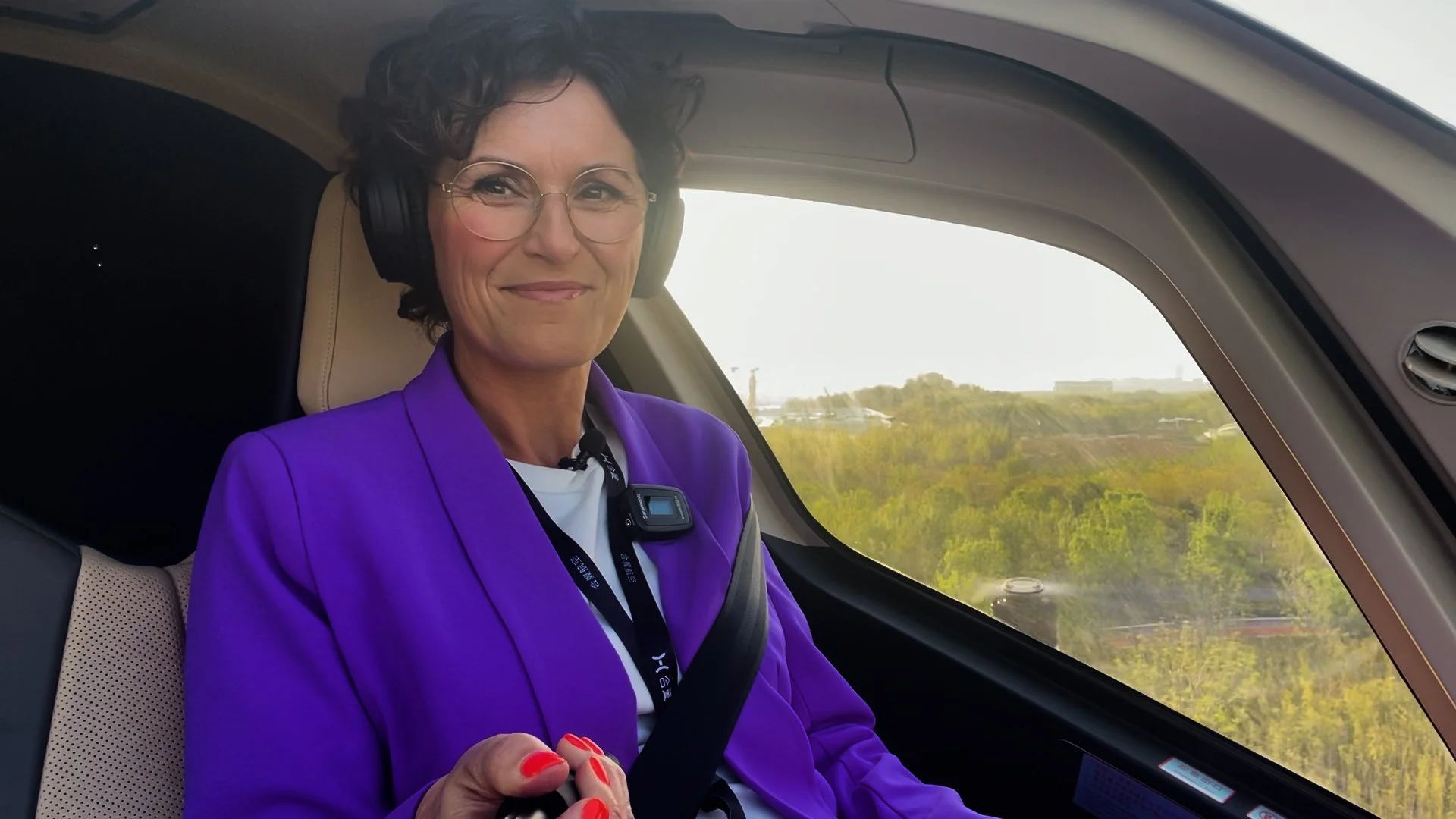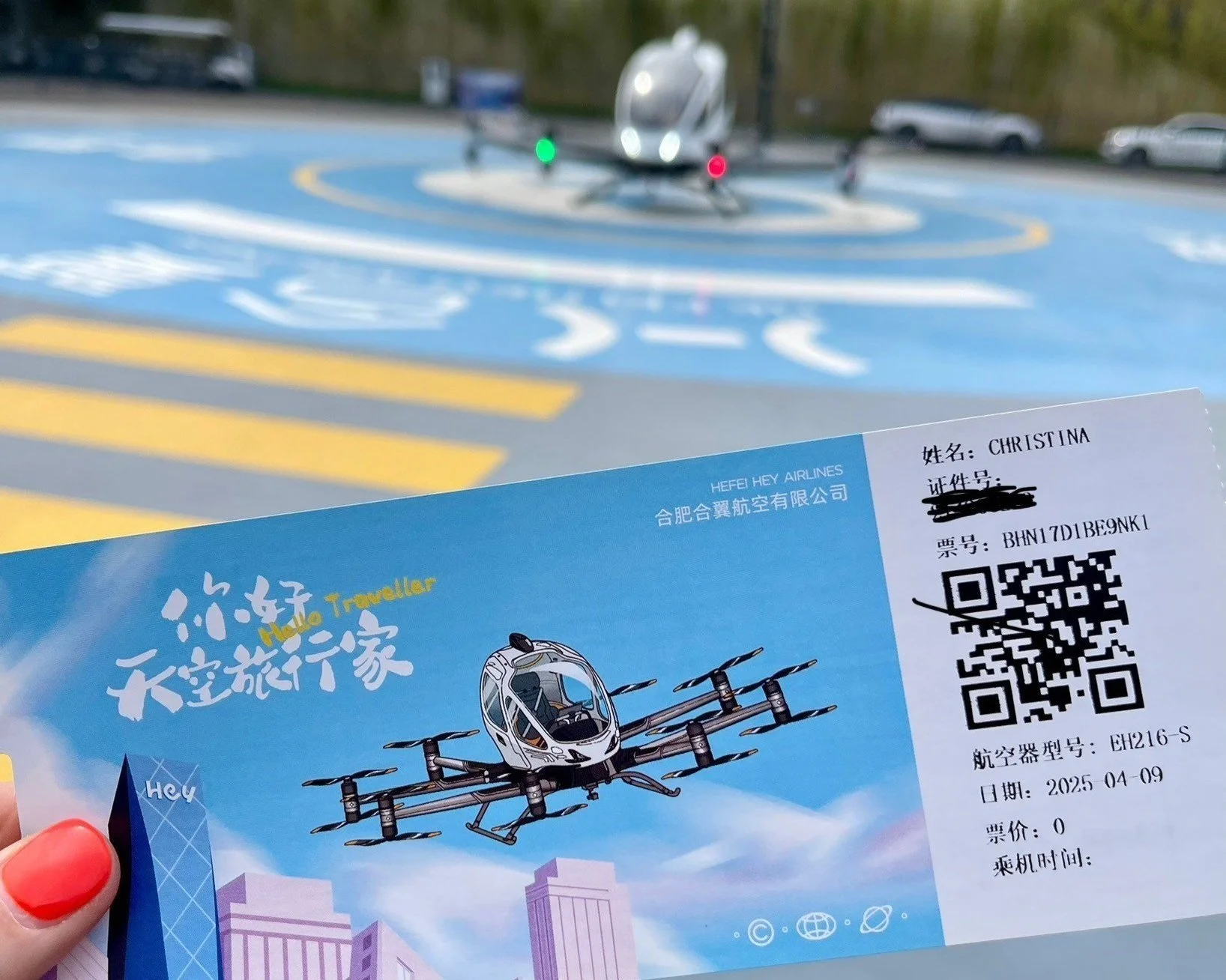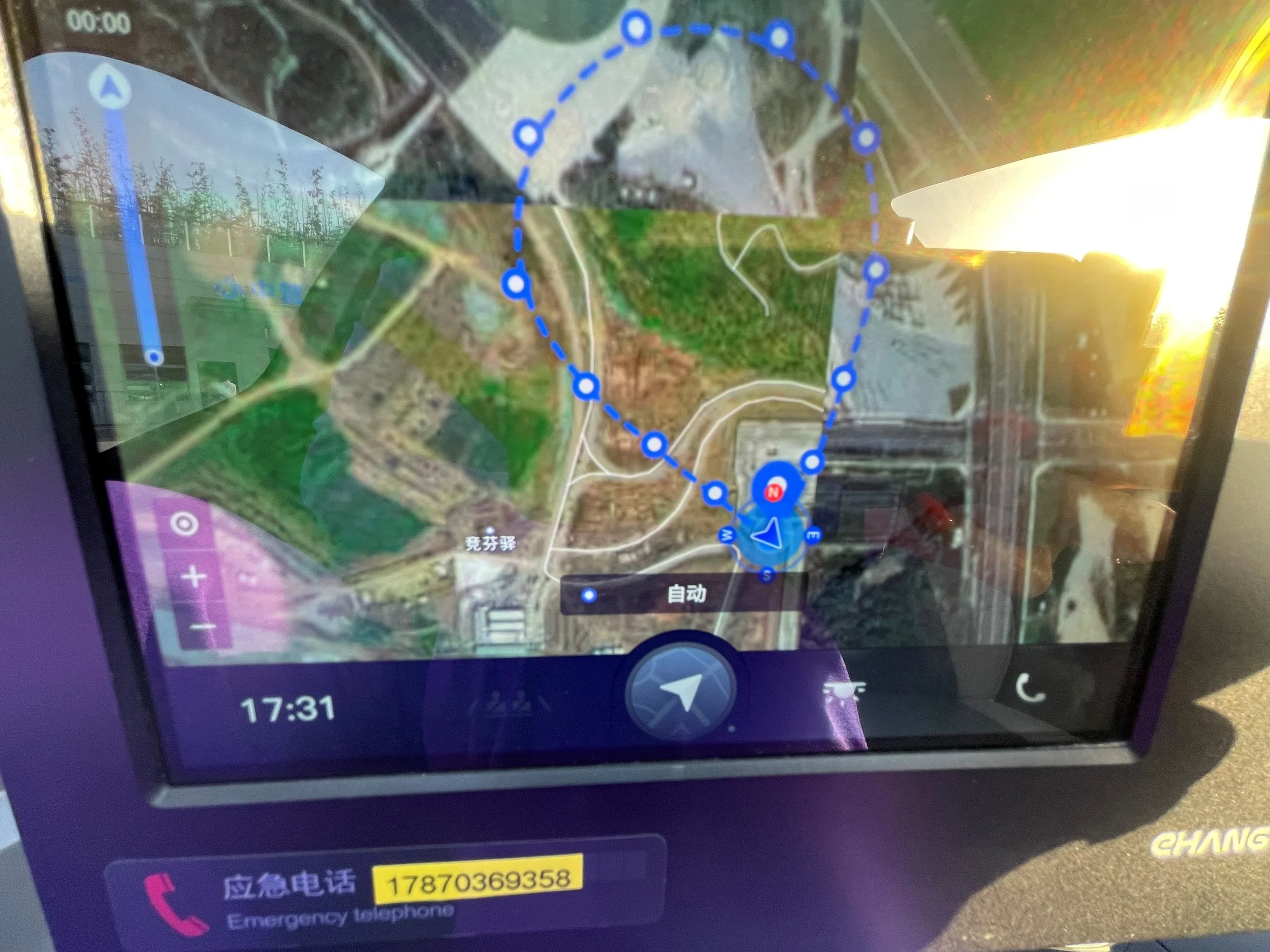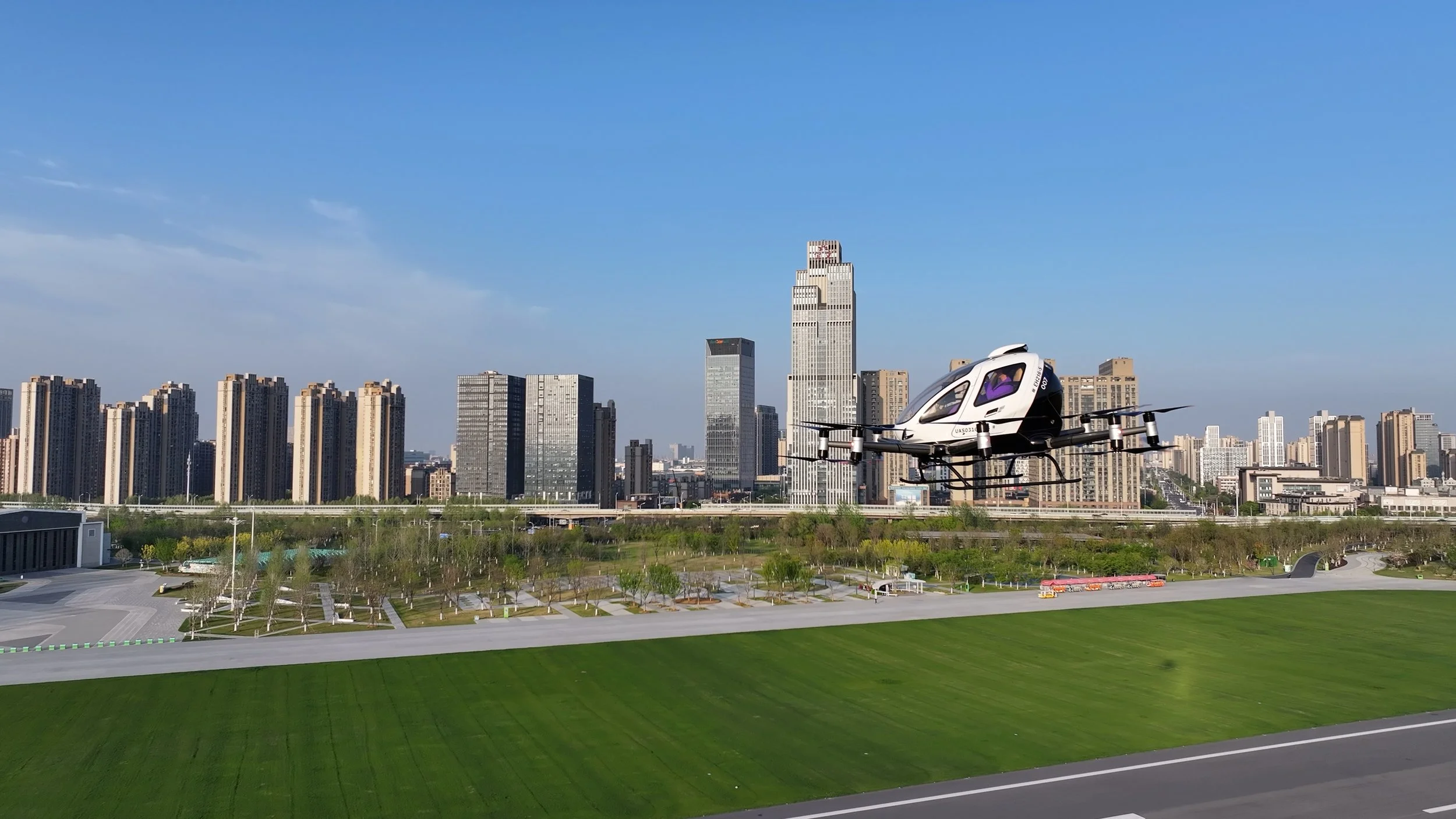Flying an Autonomous Drone
China offers a glimpse of the future of transportation with flying cars and drone delivery
Imagine a future where you can book a flying car on an app, to take you from A to B, or order a drone to deliver a meal on the roof of your office building. This future is becoming reality in China where a brand-new industry called Low Altitude Air Mobility is taking off this year, driven by multiple government plans to support development.
I recently had the chance to try a pilotless drone from Ehang, a Chinese startup listed on Nasdaq and the first company in the world to receive their Air Operator Certificate (AOC) which allows the company to commercially operate flying taxis.
It happened in Hefei, the capital of Anhui Province, where the local government invested in Ehang as well as EV producer Nio among others in a push to create an electric version of Detroit.
The passenger drone rides in Hefei are operated by Hefei Hey Airlines, a subsidiary of Hefei local government and Ehang. For now, the company is only allowed to offer sightseeing tours in the scenic Luogang Park. But in the future, it plans to become the Uber of the air, offering flying taxi rides from point-to-point.
Boarding pass to the future
In Hefei, ticket sales have already begun, the price is 216 Yuan (around 30 USD) for a flight of less than 10 minutes, and tickets are sold out for the first few months. Ehang expects that ticket prices will go down in the coming years, to reach the price level of taking an Uber on the ground.
I was very excited as I received a boarding pass with my name and passport number, then passed through a security check at the tiny airport. I’ve followed EHang’s development closely for years and knew the company had conducted more than 64,000 test flights. So, I wasn’t worried about my safety—I was simply eager to experience the technology as one of the first people in the world.
Facts about the drone: Ehang’s passenger-carrying unmanned aerial vehicle EH216-S can hold two passengers, and the maximum takeoff weight is 620 kilograms. However, in the beginning, only 130 kg is allowed. The maximum speed is 130 km/h, and the flight range is around 30 km.
Before the vertical takeoff, I was informed that there was a fire extinguisher under my seat, and a phone number I could call if I felt uncomfortable during the flight. In such a case, ground staff would take control of the drone and land it immediately.
I was alone in the drone, just me and the machine. No pilot, no controls. Only the quiet presence of an AI, keeping my course and my safety. Without a shudder, the drone lifted—smooth as an elevator into the sky.
Pilotless
The drone is fully autonomous, and the passenger only needs to select a flight destination to enjoy the journey and arrive directly at the destination.
At nearly a hundred meters, I enjoyed the view of the city in the golden hush of a setting sun. It felt like traveling through time and space, as if the future were just minutes away.
You might expect it to be quieter than a helicopter—but in reality, it was quite loud. The earphones did little to block out the noise from the 16 propellers and electric motors. If any one of them were to fail, the drone is programmed to begin an immediate landing.
The battery supports up to 48 minutes of flight time, but my round trip lasted only about 5 to 7 minutes, cruising at around 70 km/h—well below its maximum speed of 130 km/h, which likely made it a more comfortable ride.
Low-Altitude Air Mobility Industry: China is commited to become a global leader in Low-altitude air mobility. Cities like Beijing, Shanghai, Shenzhen, and Guangzhou have unveiled action plans to develop the low-altitude economy, investing Heavily in infrastructure such as takeoff and landing sites.
During the flight, I followed the path on an iPad-like screen in front of me, thinking about whether flying fully autonomously in pre-determined routes would be common in near future. Indeed, it can save a lot of time, especially in a region like the Pearl River Delta in Southern China, where EHang is based, where flying over congested bridges could significantly reduce travel time.
In China, this is very likely to happen as the central government has identified the low altitude air mobility sector (including drone delivery of goods) as a crucial emerging industry and a new driver of economic growth alongside biomanufacturing, quantum computing, embodied artificial intelligence (think humanoid robots) and 6G mobile networks.
Opening the scenic sightseeing route in Hefei is a first step to develop the industry. However, for further growth, new infrastructure is essential, including charging stations, landing pads, 2D maps, and flight control centers are needed before the industry can develop further. Local governments in Guangzhou and Shenzhen are actively involved in preparing their cities for the flying taxis.
Ehang developed the technology inhouse and has 900 patents, which is around 12 percent of all industry patents. The cost of the EH216-S drone is around 500.000 RMB (70,000 USD), and the price is expected to drop further to around 100.000 RMB (14,000 USD) in 2030.
There are other companies elsewhere working on passenger drones, such as traditional airplane producers like Airbus and Boeing, and several Chinese electric vehicle producers like Xpeng and Geely. However, all the other passenger drones require a flight certificate. So far, Ehang is the only fully autonomous drone maker in the world.
China is in a very strong position to lead this new industry as the entire supply chain is already established in the country, and the government is very supportive.
Having missed out on industries like combustion engine cars, being a leader is crucial for China—not only in setting technological standards but also in securing a strong position within global supply chains.
Many of the world’s leading suppliers from the electric vehicle industry are already involved in manufacturing batteries, sensors, and cameras for passenger drones in China.





